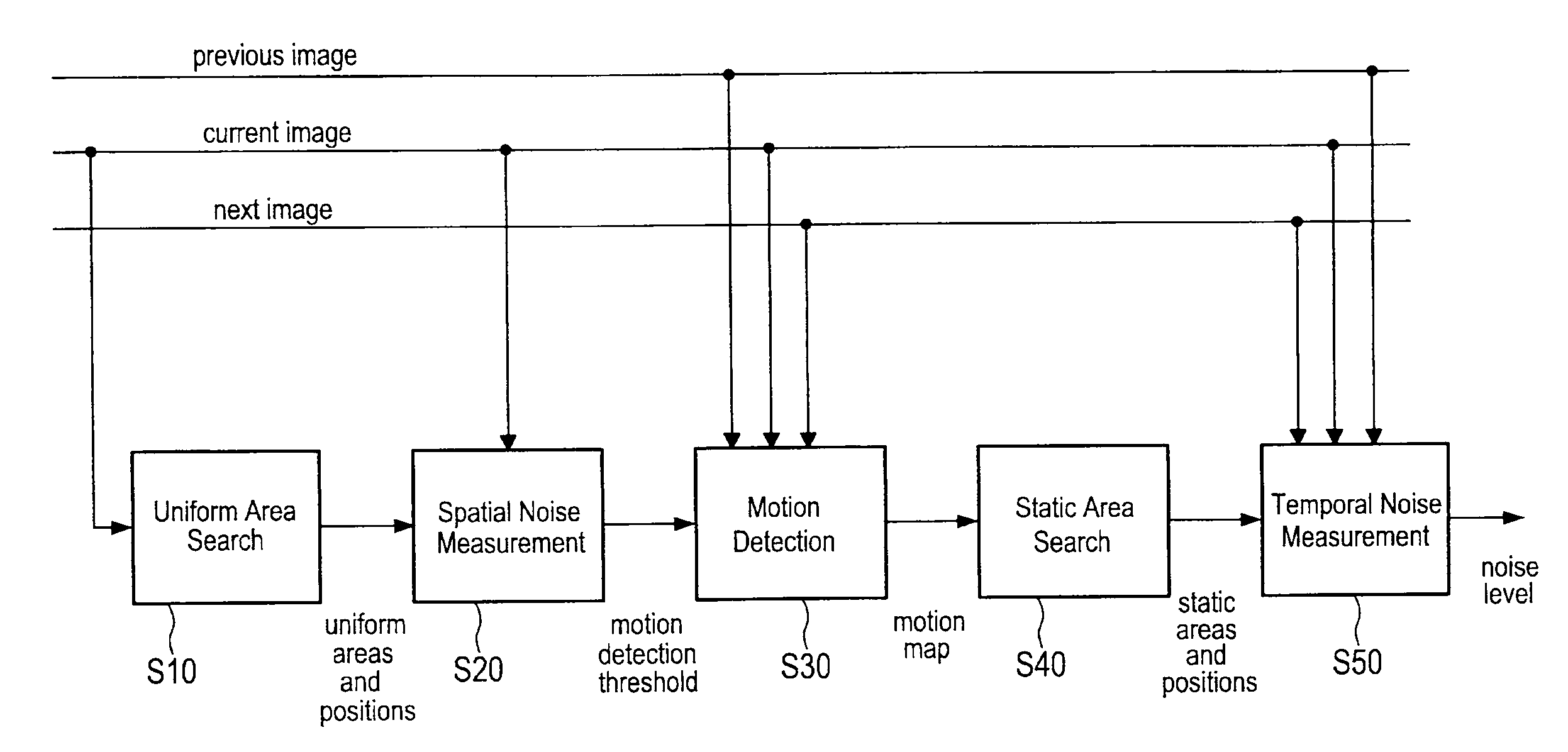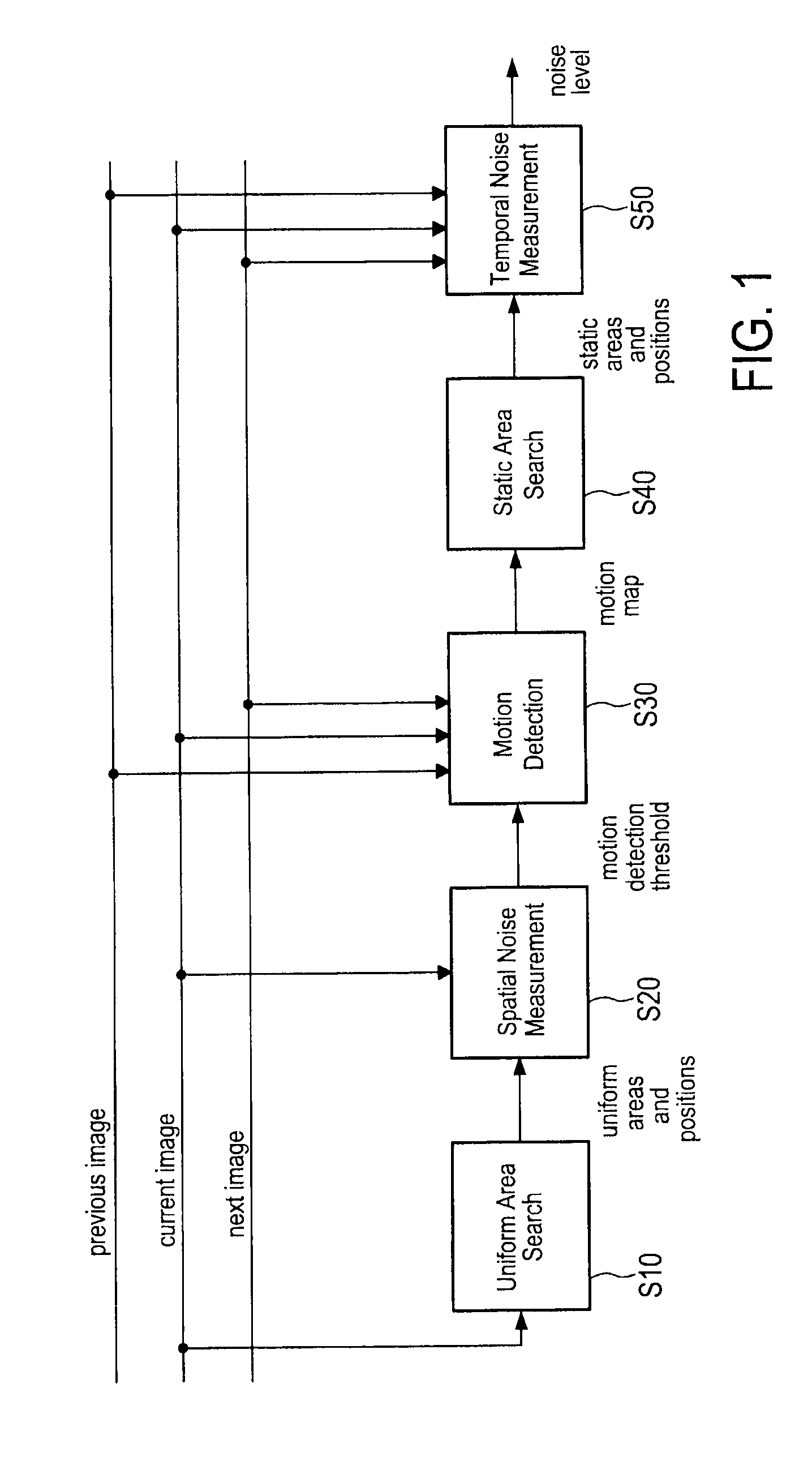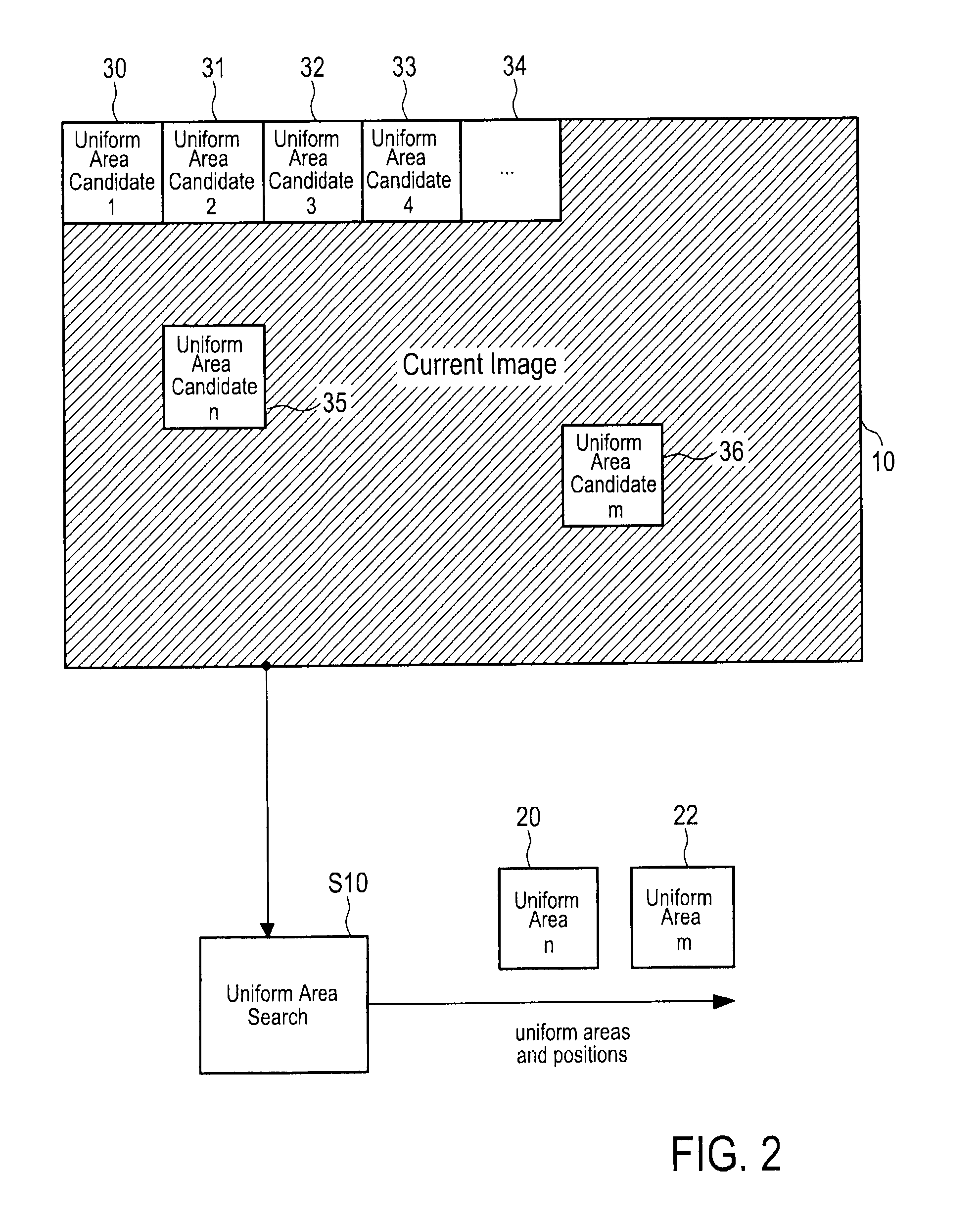Method and device for adaptive noise measurement of a video signal
a video signal and noise measurement technology, applied in the field of video signal adaptive noise measurement, can solve the problems of inability to use the method anymore as often and as easily, poor signal storage or transmission, and video signals that are often disturbed by noise, and achieves reliable results, low effort, and easy implementation.
- Summary
- Abstract
- Description
- Claims
- Application Information
AI Technical Summary
Benefits of technology
Problems solved by technology
Method used
Image
Examples
Embodiment Construction
[0044]According to the present invention a method employing multi-stage processing is provided, which may be repeated for selected or each input image (or frame) of a video signal comprising a sequence of images. Exemplarily, the proposed method shall be explained with reference to the diagrams shown in FIGS. 1 to 6 illustrating the steps of the proposed method. In particular, FIG. 1 illustrates an overview over the essential steps of the proposed method, and FIGS. 2 to 6 illustrated said steps separately with more detail.
[0045]In a first step S10, illustrated in detail in FIG. 2, a uniform area search is performed, i.e. one or more spatially uniform areas 20, 22 within a current image 10 are searched.
[0046]One image, for instance the first image, of the video sequence is searched for (spatially) uniform areas, i.e. for the area with the least amount of detail. This is, for instance, done by repeatedly selecting different (candidate) areas (also called blocks) 30, 31, 32, 33, 34, 35...
PUM
 Login to View More
Login to View More Abstract
Description
Claims
Application Information
 Login to View More
Login to View More - R&D
- Intellectual Property
- Life Sciences
- Materials
- Tech Scout
- Unparalleled Data Quality
- Higher Quality Content
- 60% Fewer Hallucinations
Browse by: Latest US Patents, China's latest patents, Technical Efficacy Thesaurus, Application Domain, Technology Topic, Popular Technical Reports.
© 2025 PatSnap. All rights reserved.Legal|Privacy policy|Modern Slavery Act Transparency Statement|Sitemap|About US| Contact US: help@patsnap.com



